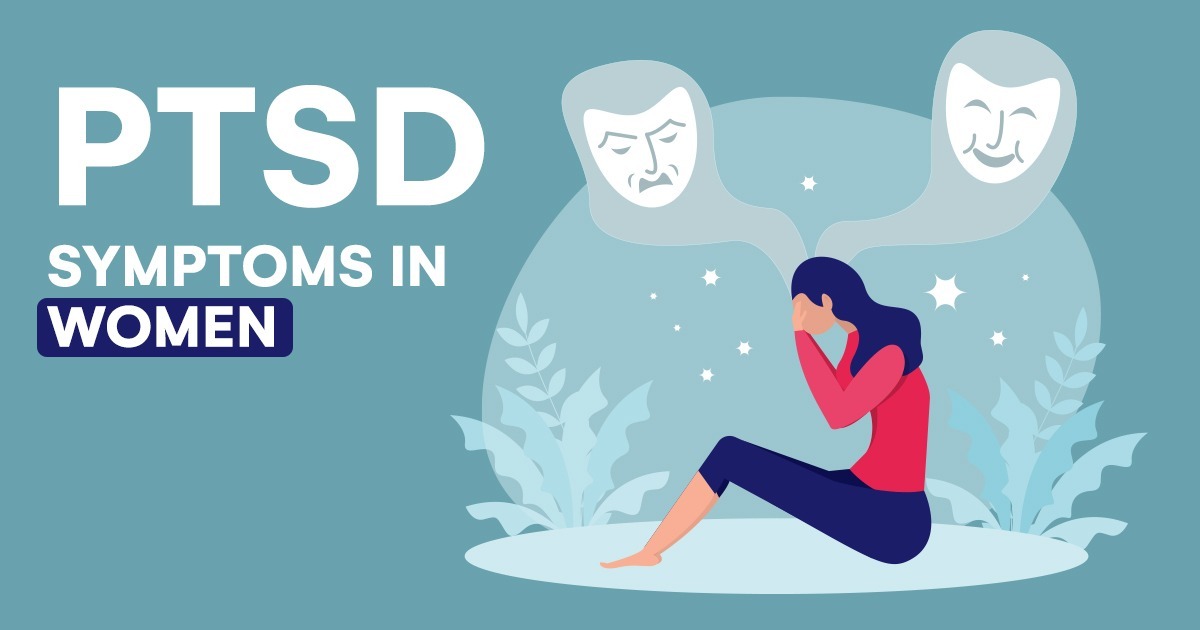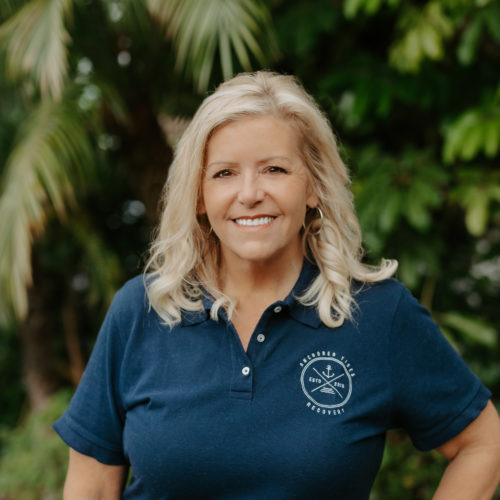
PTSD symptoms in women can look different than how they manifest in men. These differences aren’t just actual post-traumatic stress disorder. Across the board, women may experience the symptoms of mental disorders differently than men. Understanding these sex differences is essential in diagnosis and treatment.
We delve into how you experience PTSD symptoms as a woman can differ and its role in addiction and substance abuse.
What is PTSD?
Posttraumatic stress disorder, more commonly known as PTSD, develops following exposure to a scary, dangerous or shocking event. If you’re in a traumatic situation, it’s not abnormal to feel fear, anxiety, and even a sense of terror. Your body will launch a fight-or-flight response. The response is your body’s natural way of protecting you from harm and danger. Sometimes this initial response is called acute stress disorder.
Most people will then recover from those initial fight-or-flight symptoms after the immediate threat of danger passes following exposure to trauma. When those symptoms don’t go away or maybe even worsen, you could have PTSD. If you believe you have symptoms, you should speak to a mental health professional.
Possible risk factors include:
- Living through something dangerous or traumatic such as sexual or physical abuse
- Being physically hurt
- Seeing someone else getting hurt
- Seeing a dead body
- Trauma during childhood
- Feeling extreme fear or helplessness
- Having little social support after the traumatic event
- Dealing with additional stress after the event like losing your home or job
- Having a history of drug or alcohol abuse
- A history of mental disorders
According to mental health care providers, general symptoms of PTSD that we see in both men and women fall into one of four categories.
Re-Experiencing Symptoms
These symptoms might include flashbacks, where you constantly relieve the traumatic event. Re-experiencing symptoms can also be physical. For example, you might have a racing heart. Bad dreams and ongoing scary thoughts fall into this category. We often talk about flashbacks in the context of combat veterans, but they can occur in anyone who’s gone through trauma.
Your re-experiencing symptoms can create problems in your daily life. You may also feel like certain situations, words, objects, or even people remind you of the trauma, leading to re-experiencing symptoms.
Avoidance Symptoms
After you go through a traumatic event, if you have PTSD, you may develop avoidance symptoms. You might avoid the events, objects, and places that remind you of the event. You may prevent feelings or thoughts that relate to the trauma. Out of a desire to avoid reminders or triggers, you could completely change your daily routine.
Arousal and Reactivity
These physical symptoms can lead you to feel edgy or tense and have angry outbursts consistently. You might have physical health symptoms like problems sleeping, and you could startle easily. These symptoms are different from the other types because they’re constant and not usually triggered by anything.
Cognition and Mood Symptoms
These symptoms can lead you to feel alienated or withdrawn from your loved ones. You might have trouble remembering key facts of the traumatic event. These symptoms could lead you to negatively view yourself or the world, and you could have guilt or blame yourself.
Cognition and mood symptoms also include a loss of interest in things you once found enjoyable. While it’s relatively normal to experience some or all of these symptoms as part of your reactions to trauma, if they last for more than a month, it might indicate you have PTSD.

Are PTSD Symptoms in Women Different?
PTSD symptoms in women may be different from what men experience. For example, PTSD symptoms in women are more likely to include being easily startled and feeling numb. You may have a hard time experiencing emotions. Avoidance is more common in women than men, and women with a history of PTSD are more likely to experience depression and anxiety than men.
The symptoms may last longer in women than men. For example, women have symptoms on average for four years, while men, on average, experience symptoms for a year. If you’re a woman with PTSD, you are less likely to have a drug abuse problem after the trauma compared to a man.
Is PTSD More Common in Males or Females?
There are gender differences in the prevalence of PTSD. Healthcare providers estimate that one in 10 women will develop symptoms of PTSD during their lifetime. As a woman, you are around twice as likely as a man to develop PTSD. The most common type of trauma women experience is sexual assault, and the rates are higher than in men. Women are also more likely to experience childhood abuse or domestic violence in their life, which can lead to PTSD.
Effective Treatments
If you believe you have symptoms of post-traumatic stress disorder, reach out and get help. There are excellent treatment options available, and they tend to be highly effective.
For example, the primary treatments are talk therapy and medication.
- Medications include antidepressants to help with symptoms like worry, numbness, and sadness.
- Talk therapy for PTSD usually lasts anywhere from 6 to 12 weeks. You can work one-on-one with a therapist or participate in group therapy.
- The goals of talk therapy include learning about symptoms, beginning to identify triggers, and developing skills that help you manage your symptoms.
- Cognitive-behavioral therapy is a specific type of talk therapy that we often use for PTSD. When you participate in CBT, you may go through exposure therapy.
- Exposure therapy will introduce you to the trauma in a prolonged, safe, and managed way. Then, from there, you can start to cope with your feelings more effectively.
- Goals of any type of talk therapy include learning about the effects of trauma, developing relaxation skills, and dealing with feelings like guilt or shame.
What Happens when PTSD Is Not Treated?
We want to emphasize the risks of untreated PTSD. When you have untreated post-traumatic stress disorder, it’s doubtful symptoms will just go away. Instead, what happens without treatment is that more complications and comorbidities can develop.
For example, not getting proper treatment and mental health care can make you susceptible to drug and alcohol abuse, sleep problems, and depression. There are also links between not getting treatment and then developing chronic pain. Other long-term effects of PTSD that goes without treatment include:
- Anger management issues—you may start to have angry outbursts. These anger problems can lead to violence in your life or the breakdown of relationships.
- Loneliness—you may end up withdrawing from the people who care about you, leading to isolation.
- Comorbid depression—this is a considerable risk of untreated posttraumatic stress disorder. Major depression can cause suicidal thoughts and behaviors.
- Substance abuse—the potential for substance misuse to occur is mentioned above, and we can’t overstate the risk of this. When you have any mental health condition for which you’re not getting treatment, it increases your risk of developing a drug or alcohol problem. The increased risk could be due to multiple factors. For example, if you’re not getting professional treatment, you might attempt to self-medicate with drugs or alcohol. Also, the areas of the brain playing a role in mental disorders contribute to addiction.
The most powerful message we want you to take away from this is that you don’t have to suffer alone; if you’re a woman with posttraumatic stress disorder, Anchored Tides Recovery can help. Whether it’s stemming from sexual violence, military combat, substance abuse, or another traumatic event, we are here for you. Treatments are available to help improve your quality of life and relationships and lower your risk of developing complications like an addiction to drugs or alcohol. Contact us at 866-600-7709 to learn more.


















